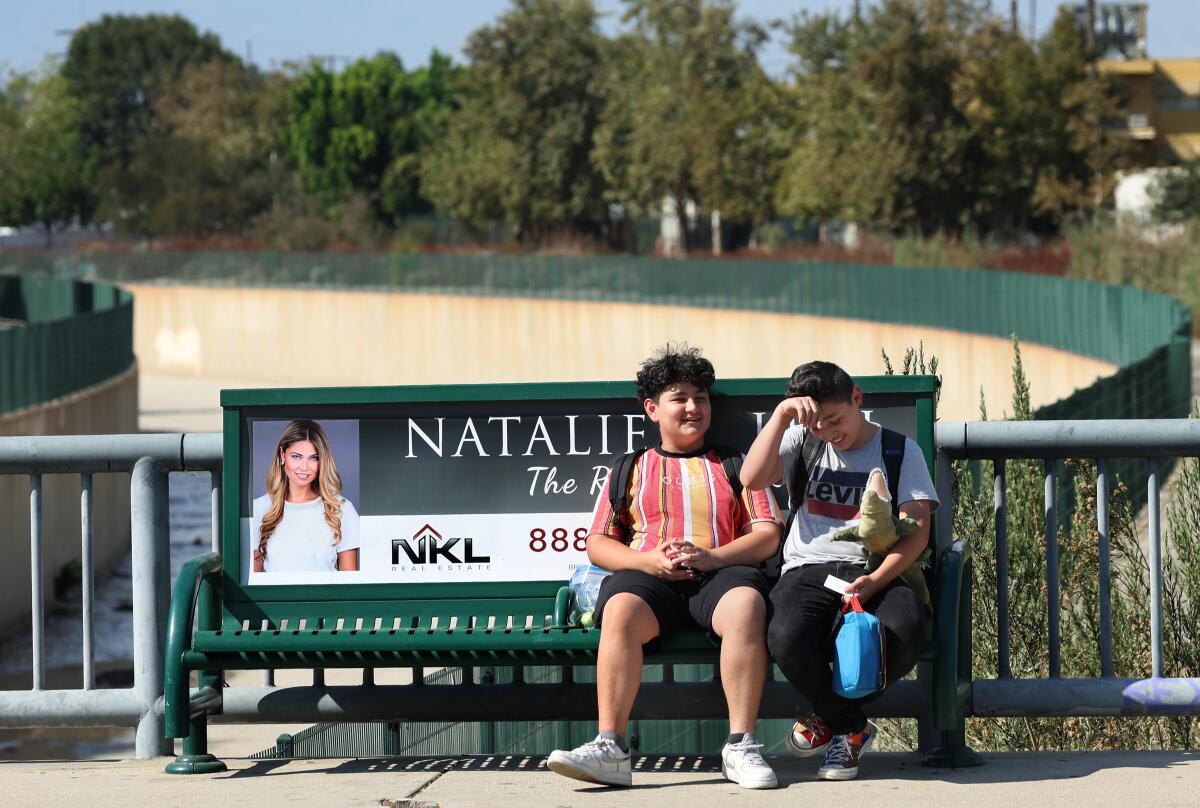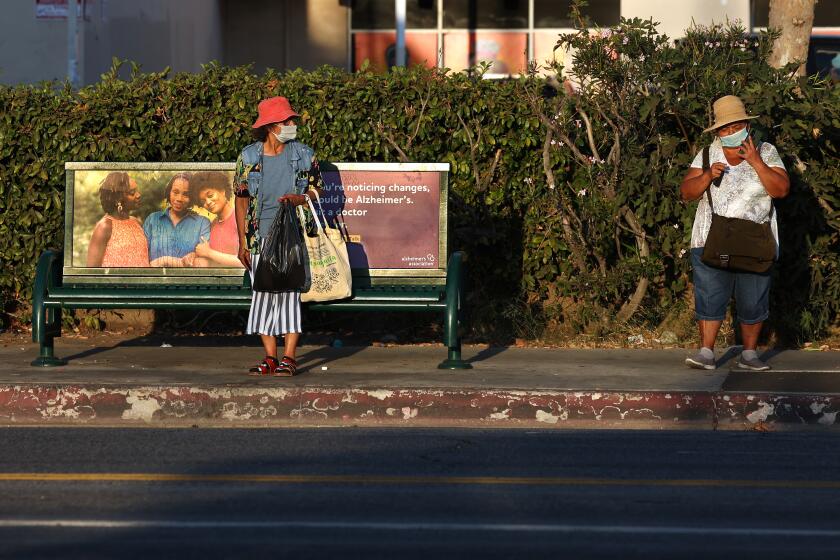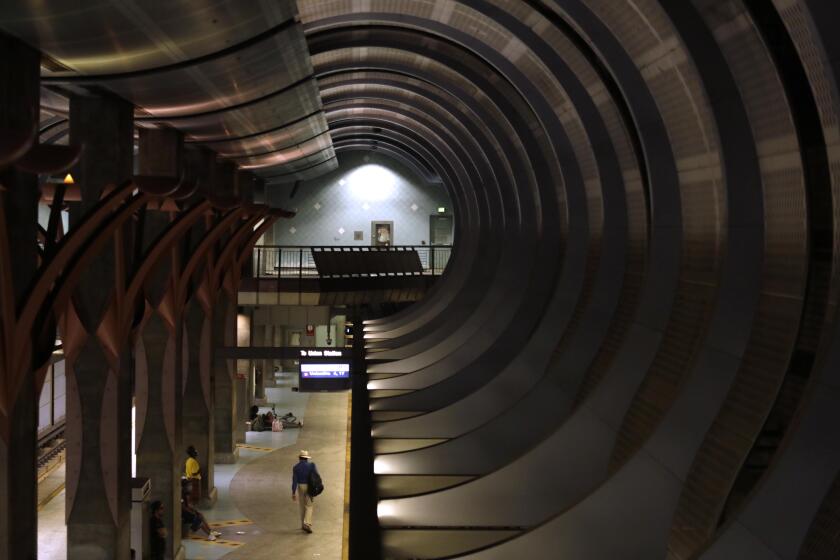Editorial: Bus shelters aren’t perks. They’re crucial to the future of L.A. transit

There’s good news for transit riders, pedestrians and pretty much anyone else who travels L.A.’s sidewalks — the city is finally going to start installing shelters at many of the warmest, most well-used bus stops.
It’s a long overdue public investment. More than three-fourths of Los Angeles’ bus stops have no shelters or shade, leaving riders, the majority of whom are low-income people of color who depend on transit, to bake in blistering heat or get soaked by rain.
What should be a simple, basic amenity of bus service – a bench to sit on and some shade while waiting – is still a rarity in most areas of the region.
In a region where voters have supported several tax increases to bolster transit services, it’s frustrating that such a basic amenity for riders — a bench with shelter — has never been a funding priority for city and county leaders.
That, however, is beginning to change. In 2022, the City Council approved a new 10-year bus shelter contract with Tranzito-Vector to install and maintain 3,000 shelters and sell advertising space. Under the agreement, the city buys the structures and will collect 60.5% of the revenue from advertising, including digital displays.
The program prioritizes putting shelters at stops with the highest ridership in the hotter areas, with the goal of providing shade for 75% of riders. The city will install the shelters in phases, starting in early 2024, with 280 structures planned for the first year.
Swifties are fueling a city-by-city transit boom that points the way to reviving slumping ridership by improving service for leisure travelers and non-9-to-5 commuters.
Another significant change is that the council is expected to approve an ordinance Wednesday requiring that all of the revenue received from advertising goes back into the program, first to build the promised shelters, then to make improvements to the surrounding streets, sidewalks and transit services. That’s important because the money can’t be siphoned off for other uses, as has been done in the past.
Under the previous shelter contract approved more than two decades ago, half of the ad revenue was given to council offices, ostensibly for community beautification projects but often used to pay council staff. The other half of the revenue went into the general fund to pay for citywide services.
Disorder, rising crime and declining confidence not only pose an existential crisis to the Metro system but also to the region’s climate, sustainability and livability goals.
Los Angeles leaders have set ambitious goals to increase public transportation ridership and reduce driving to help fight climate change. The city will never meet those goals without making it easier and more pleasant for people to take transit, walk and bicycle.
Although the new bus shelter program is a step in the right direction, it highlights a larger problem. L.A. relies on a patchwork of programs and cobbled-together revenue sources to fund basic public amenities such as sidewalks, crosswalks, shade trees and streetlights. The funding has never been enough and it changes year to year, leading to decades-long backlogs in maintenance.
Ultimately Los Angeles needs a long-term plan that identifies and funds the city’s public works needs.
More to Read
A cure for the common opinion
Get thought-provoking perspectives with our weekly newsletter.
You may occasionally receive promotional content from the Los Angeles Times.













